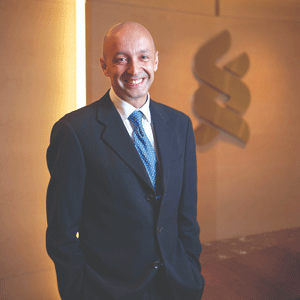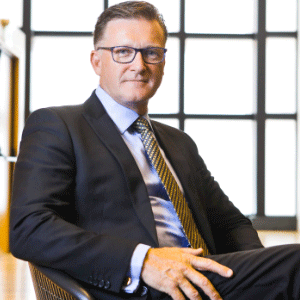THANK YOU FOR SUBSCRIBING

Blockchain Technology helps Reinstate the Gold Standard
Sergei Vozchikov, CEO, Copernicus Gold


Sergei Vozchikov, CEO, Copernicus Gold
Ever since gold was first smelted more than 5,000 years ago, it has played a key role in the world’s development and economy. Historically, the precious metal is the only monetary currency that has withstood the test of time across millennia — in stark contrast to more than 2,500 created cryptocurrencies that have disappeared in the past decade alone.
For a long time, money was based on the Gold Standard, a system by which the value of a country’s currency or paper money was directly linked to gold. By the late 19th century, many of the world’s major currencies were pegged to gold at a set price per ounce. The Bretton Woods Agreement of 1944 further cemented the Gold Standard’s ubiquitous use. Under the agreement, exchange values for all currencies were set in terms of gold, and foreign official holdings by member countries converted into gold at par values of $35 per ounce.
The strengthening of the US dollar, however, soon heralded the end of the Gold Standard. In 1971, President Nixon announced the “temporary” suspension of dollar-to-gold conversions. In the wake of the initiative that would later become known as the “Nixon shock,” people were forced to transition from gold coins to paper money. Gold, it seemed, had finally lost it shine.
The future of money lies in Blockchain
Fiat currencies rose in prominence after 1971, and today they continue to evolve, pushed forth by technology. The digital age, especially with the advent of blockchain technology, has enabled the creation of a new type of currency—cryptocurrency.
Bitcoin, invented nearly nine years ago, and Ethereum are two such currencies that are rapidly being adopted as mainstream fiat currencies. Despite their volatility, cryptocurrencies have attracted growing interest from the financial industry in recent years. Goldman Sachs, for example, is currently exploring a bitcoin trading venture. Key forex trading platforms are also expected to launch pairs on their platform in 2018.
Cryptocurrencies function on the basis on blockchain technology. Often described as a type of ledger, blockchain verifies and records, in a transparent manner, every transaction that occurs. Transactions occur in blocks that are link together in an immutable chain using mathematical algorithms.
For a long time, money was based on the Gold Standard, a system by which the value of a country’s currency or paper money was directly linked to gold
Earlier this year, China announced that it will move to block the dollar’s global dominance by pricing oil in yuan using a gold-backed futures contract based in Shanghai. The country has also been strengthening its gold reserves in recent years. Breaking a six-year silence in June 2015, China revealed it has 1,658 tons of gold in reserves. The last reported figure before this was 1,054 tons.
Chinese regulators have been clamping down on cryptocurrencies and initial coin offerings (ICOs) this year, which begs the question: is China is gearing up for a currency pegged to gold?
2017 also saw the rise of another country that was far more bullish on gold. In June, Kyrgyzstan’s Prime Minister Sapar Isakov boldly announced that the nation was keen to create a national cryptocurrency backed by its sovereign stores of gold.
Working out reserves
Linking a digital asset to a physical amount of gold would help to reinstate the Gold Standard once again. However, the act of such pegging implies a physical store of the asset is needed. Which leads to the question: what is the optimal amount of physical asset you need to store in order to be able to fund such a payment system?
To answer that question, Copernicus Gold’s mathematicians and economists created a special algorithm. The formula determines the optimal amount of a physical asset a firm needs to hold in its reserves in order to fund a global payment system at any one point in time. The amount calculated is dependent on a wide range of variables, and the mathematical model accounts for the market price of gold, the bullions’ weight and other conditions.
The algorithm took Copernicus Gold’s team more than four years to test and refine. In September 2017, the US Patent Office granted Copernicus Gold a patent for the algorithm — the first to be granted for a digital asset linked to a commodity reserve.
A priority was to consider how to counter the inherent security risks, such as hacking, in blockchain technology. The blockchain had to be structured in such a way that makes it impossible to tamper with transactions, one in which you don’t really have to trust the other party or the party in the middle, you can just trust the mathematics.
Reaching the unbanked
While blockchain can help reinstate the Gold Standard, it’s unlikely to do so. Fiat currencies are so pervasive in the everyday system of consumerism that governments are unlikely to back away from paper currency any time soon. Still, digital currencies hold great potential to become more mainstream.
If you take the unbanked, for example, at least s1 in 4 people globally are unbanked. These are the people that are going to turn to digital assets like Copernicus Gold. Because they can buy slowly online, in any grammage of digital gold, they can save up digital gold until they have enough to redeem physical gold, or trade it for other goods and services — unencumbered by the need to save in cash, which can be stolen.
In that sense, we believe that blockchain will revolutionise money, and in a meaningful way, that will bring back the Gold Standard.












